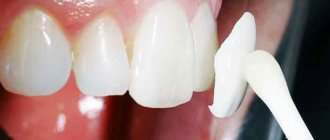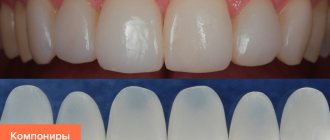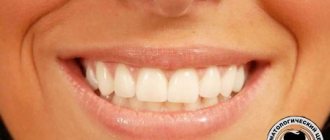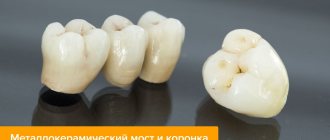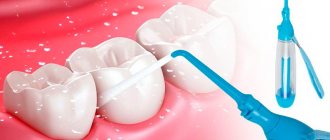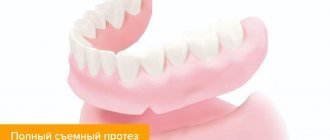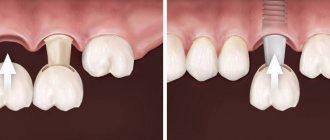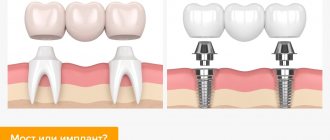It will be interesting to know how to cook a mouth guard for boxing for people who are passionate and professionally involved in this spectacular sport. Cooking lovers can relax; this material is for real athletes and boxing fans. A boxing mouth guard is a device used to protect a boxer's teeth and jaw. Mouthguards for protecting teeth come in 2 types, single and double. The single-jawed one is fixed only on the upper jaw, while the double-jawed one has a hole, which helps to facilitate the athlete’s breathing. If the preparation is carried out incorrectly, then the mouth guard will have weak teeth marks; such a device will not be able to provide good protection.
Why cook kapa?
A mouth guard is a special rubber band that a boxer holds in his mouth during a fight. This is a mandatory part of every boxer's equipment. Its main function is protection from strong impacts and various types of injuries.
There are several types of this accessory:
- single-jawed;
- two-jawed.
The most popular are the single-jawed species.
Many novice athletes do not know why to cook the product, since it is sold already in finished form. The answer to this question is very simple - thanks to the cooking procedure, the rubber takes the shape of a jaw. And this accessory should fit snugly to the jaw. The degree of protection of teeth during combat depends on this.
Cooking technology
Having chosen a mouth guard for boxing, you then need to independently carry out the procedure of cooking it, or rather boiling it. The whole process is simple to perform, just follow the following sequence of actions:
- Boil water in a kettle or ladle.
- Take two containers and pour boiling water into one, and fill the second with clean cold water.
- First place the product in a vessel with boiling water and leave for exactly one minute. There is no need to overexpose it.
- After the specified time has passed, take out the mouthguard, place it between your jaws and bite down as hard as possible. While in boiling water, the rubber will soften well and easily take on the desired shape.
- Leave the tray in your mouth for about five minutes.
- After the specified time has passed, remove the mouthguard and place it in a container filled with cold water. This is necessary for the rubber to harden.
Master class: how to make mouth guard at home
Once the athlete has chosen the type, you need to decide on the material from which the mouthguard is made. It is better to take a mouthguard of medium density; tooth protection should not be thin and made of a very soft material. The cost of mouth guards varies from 650 to 1,300 rubles, and usually well-known manufacturers supply equipment for athletes to the shelves of sports stores that fully meets the requirements.
As soon as the athlete gets home, the obvious question that comes to his mind is how to cook a mouthguard. There are many types and options for mouth guards, but there is only one way to cook protective products. The cooking instructions are as follows:
- The first step is to prepare two pans, one should contain very cold water, the other boiling water.
- The next stage of preparation is to place the product in a pan with very hot water and leave for about half a minute.
- After 30 seconds have passed, the mouthguard must be shaped anatomically to fit the teeth of the boxer who is doing the preparation. To do this, you need to put the mouth guard in your mouth and clench your teeth as hard as possible.
- You need to keep the mouthguard in your mouth for about 5 minutes.
- The last step is to immerse the tray in very cold water, thereby hardening the impression.
You can check whether the mouth guard is made correctly by placing it in your mouth; it should sit comfortably, only in this way will the mouth guard provide full protection of the jaw from blows from an opponent.
Mouthguard fitting
As the temperature rises, the rubber softens. To fit it correctly, you need to remove it from boiling water, place it in cold water for one second and immediately fix it on the upper jaw.
There are several nuances to fitting a mouth guard:
- First the back part is fixed, and then the front;
- after the mouthguard is completely seated, it is pressed with your fingers to repeat the shape of the teeth and jaw;
- if a double-sided mouthguard is being adjusted, you cannot remove the plug from the holes until it takes the form of a bite;
- If it doesn’t work the first time, you can repeat the entire procedure.
If the mouth guard is correctly selected, it fits tightly on the upper jaw and does not require additional fixation.
There are two types of mouthguards - made of thermoplastic or silicone. The latter option does not require special adjustment and is easily fixed on the upper jaw, and no cooking is required.
Thermoplastic mouthguards are suitable for the classic brewing procedure. But you should always take into account the manufacturer's recommendations.
How to prepare a children's mouthguard for boxing
A children's mouthguard is prepared in exactly the same way as a product for an adult athlete. However, such protective devices should be selected very carefully; a good product should include a hygienic storage case. The mouth guard itself should not be toxic, and the most acceptable option is to make custom-made children’s protective equipment at a dental clinic.
In conclusion, it is worth noting the importance of preparing mouth guards for children. If the mouth guard is prepared at home, it is important to maintain sterility during preparation. It is important to ensure that the child does not unclench his teeth while fixing the impression. If you follow the rules, you will definitely be able to make good protection, and the little athlete will be able to confidently enter the ring without fear for the condition of his teeth.
Rules for preparing mouthguard
Before you start cooking kapa, you need to carefully study the recommendations that will help you avoid common mistakes. There are several important rules:
- if the product has been overcooked, it must be thrown away immediately;
- When placing a product in hot water, it must not be completely immersed - it is important that it floats on the surface of the liquid;
- When squeezing your teeth to give the mouthguard the desired shape, you cannot move your jaw; it is important to firmly fix the product and hold it.
When the mouthguard is prepared correctly, it:
- has clear prints;
- holds tightly;
- does not create discomfort during use.
Question to an expert
Which mouth guard is best for a beginner?
The ideal choice is a two-jaw mouth guard. This model is suitable for both beginner athletes and women. The product provides maximum jaw protection at the initial level of training.
Mouthguard for teeth: how to choose, cook, prepare, put on and wear correctly
A mouth guard is a simple and familiar piece of equipment. Its simple design does not raise questions, but not everyone knows how to properly make a mouthguard for boxing, how to adjust and customize it for themselves.
What types of mouth guards are there?
Since this dental accessory is used not only in boxing, you can find mouth guards for different sports on sale. Therefore, before purchasing, you need to make sure of the intended purpose of the product. Conventionally, protection for teeth can be divided according to several criteria.
By purpose
According to the purpose of the mouthguards there are:
- Designed to protect the teeth of the upper jaw.
- Designed for both jaws (equipped with a special hole through which the athlete can breathe).
By material
There are three types of boxing mouthguards for teeth:
- Hard standard (for those with perfectly straight teeth).
- Thermoplastic.
- Rigid, made according to an individual cast.
The best and most affordable material is thermoplastic. Thermoplastic aligners soften under the influence of hot water and then quickly cool, “remembering” the shape of the teeth. The main thing is to choose a product that is suitable in size.
By size and thickness
Choosing the size of a mouthguard to protect your teeth and mouth must be very careful. In Moscow you can buy mouth guards of different sizes and thicknesses. A product that is the right size can be perfectly adjusted to fit your teeth; a size that is too large will not allow the item to stay in the mouth, and an accessory that is too small will cause discomfort and pain in the teeth.
It is better to give preference to mouthguards of medium thickness: a thick one will feel strongly in the mouth, and a thin one will not be able to provide the proper degree of protection for teeth and gums.
By color
There are mouthguards for adults and children, in different colors and with different tastes. The most popular protective accessories are mint flavored.
As a natural antiseptic, mint provides additional protection against bacteria, and as a natural deodorant, it provides a feeling of freshness.
Purpose of a protective mouth guard
It is necessary to wear a mouth guard for:
- Lip protection. Despite the fact that the product is designed to protect the dentition and jaw, its use also helps to protect the lips. It will not be possible to completely protect them from injury, but the number of lacerations will be significantly reduced.
- Exceptions for cerebral hemorrhage.
- Preventing damage to the trachea from dental fragments.
- Avoiding displacement of the cervical vertebrae.
- Reduce the likelihood of concussion.
Experienced boxers note that a mouthguard should also be used to relieve tension in the facial muscles. This helps to quickly restore balance after missed hits.
Children also need protection - you need to put a mouthguard on your child’s teeth both during training and before serious sparring. A novice athlete must know how to use a mouthguard and how it should fit. Only those parents whose children wear braces will need to seek professional help. It is extremely difficult to choose the right mouth guard for teeth with braces; it is better to consult a dentist.
How to choose a mouthguard for teeth
Having chosen a mouth guard of the optimal type and size, you should check it before purchasing for:
- gender conformity: women's mouthguards are not suitable for males and vice versa;
- age characteristics: it is better for a child to purchase specialized products;
- purpose: hockey protection accessories do not meet the requirements in boxing;
- absence of odor: if you have the slightest doubt about the quality of the material, you should not purchase the product.
For boxing, it is better to choose a mouthguard of a color that cannot be confused with blood. Referees and sports traumatologists recommend not to choose or wear red-colored items, as they interfere with the visual assessment of the fighter’s condition due to their resemblance to bleeding.
How to properly prepare and cook a dental guard at home
Having realized the importance of the protective element and choosing a suitable copy from high-quality thermoplastic, all that remains is to prepare a mouthguard for boxing. After purchasing, you need to cook the burl, give it the desired shape and cool it. First you need to get rid of excess material at the edges by trying the mouthguard in your mouth and cutting off the excess, and then:
- Take a container (pan) of such volume that it is enough to freely place the product. Fill it with water.
- Place the container on the fire and wait for the liquid to boil.
- Using a tablespoon or slotted spoon, lower the mouth guard into boiling water and brew. When diving for the first time, you need to keep the product in water for no more than 30 seconds - this is the standard time during which thermoplastic softens. Some companies' products have special holders that can be used to immerse them in boiling water.
- Remove, wait until the temperature is tolerable: when the hot plastic becomes safe for the skin and mucous membranes.
- Insert the mouthguard into your mouth the way it should sit during the fight.
- Hold it tightly with both jaws, press with your tongue and hands, giving it an individual shape.
- Smooth out the outer free part of the material, leaning it against the gums, wait 15–20 seconds.
Less quality plastic requires longer exposure on the teeth - from 3 to 4 minutes. Characteristics are indicated in the instructions for use.
After unclenching the teeth, the product should remain on the upper jaw and sit quite tightly. Only in this case is it correctly fitted. But the preparation does not end there; it is completed by the most important stage - hardening. At home, cold water comes to the rescue. After pouring cooled boiled water into any container, you need to place the formed product in it and leave for 5-7 minutes or as long as necessary for hardening. During this time, the material will cool down and take the shape that will be most comfortable for the user.
Note! In many videos where they cook mouth guards, the characters in the videos try to drown the plastic in boiling water, holding it with various cutlery. There is no need to do this. To make a mouthguard correctly, you need to let it “free float”. Even without complete immersion, the material will heat up perfectly and become plastic.
You can see the process of cooking and fitting the mouthguard in all details in the following video:
How the mouthguard should sit: checking and re-cooking
There are always doubts whether it was possible to correctly fit the protective element to the teeth and whether it will be comfortable for the boxer. To check, you will have to wait until the product cools down after cooking and put it on your teeth. Correct fit will ensure:
- comfort, absence of pain, rubbing;
- tight fit: if displacement is noticed when opening the mouth or turning the head, you will have to re-cook the mouth guard and adjust it again;
- exact correspondence of the shape of the accessory to the shape of the dentition and jaw features.
An external inspection will not be superfluous. Before putting on a mouthguard, you need to check for tooth marks. If they are clear and deep, then the protection is prepared correctly.
If you didn’t succeed in making a mouth guard to fit your teeth the first time, you can brew it again. This should be done using the same technology: prepare a container with boiling water and cook the plastic in it. To get the expected result after failure, it is worth reviewing the instructions for use again. You may need to increase the cooking time by leaving the product to cook for a longer period.
How to put on and wear a dental guard, rules of use
To use a mouthguard for a long time and without problems, it is enough to follow simple rules of care and storage:
- prepare a well-ventilated container for it (self-respecting manufacturers supply it with the product);
- choose a storage location where direct sunlight cannot penetrate;
- use the accessory only for its intended purpose, do not gnaw or bite;
- do everything to keep the plastic clean: rinse, rinse with clean water, wipe with a lint-free cloth every time after wearing.
It is important to wear the mouth guard correctly. To do this, you need to open your mouth wide, stretching your lips to the sides, place the protection on your teeth and bite. You can use this product for no more than six months. On average, you can wear a boxing mouthguard for one season. It is not recommended to use it longer - you need to prepare a new one, as the degree of protection decreases. It will also not be possible to digest a mouth guard that has spent its allotted time, since the material will begin to crumble and deform. Manufacturers write in the instructions how long you can wear a mouth guard.
Making a dental guard yourself is easy. The main thing is to give preference to a manufacturer that has proven itself in the sports market, choose a product of the appropriate size and follow the instructions. With the right approach, a high-quality mouthguard fits perfectly and provides reliable protection.
Features of mouthguard care
This is an important part of using this accessory. It’s easy to care for your mouth guards by following these tips:
- need to be stored in a special container that will protect from dust and dirt;
- after the mouthguard has been removed from the jaw, it must be rinsed with plenty of running water;
- if necessary, it is allowed to periodically clean the product with toothpaste and a brush;
- Boiling water cannot be used for sanitization; for this purpose, special pharmacological agents are used, which are available in a wide range in pharmacies.
Consequences of pathology
What malocclusion affects depends on the severity and type of deformity. Often pathology has a negative impact on other systems and organs, disrupting their normal functioning.
How does malocclusion affect health and what consequences does it cause:
- diseases of the digestive tract - deformation of the position of the jaws interferes with the quality of chewing food;
- premature wear of tooth enamel;
- high probability of breakage of dentures if they are present and the impossibility of placing them when indicated;
- early wear and tear of the temporomandibular joint and its weakening, which leads to jaw pain and headaches;
- premature appearance of wrinkles, deformation of the normal oval of the face;
- problems with diction, inability to produce intelligible speech.
Common mistakes
The process of brewing burls does not always go without problems. It is difficult to cook a mouthguard incorrectly, but this happens when the product is placed in water at the wrong temperature;
- the accessory becomes hard when it is placed in cold or insufficiently heated water, as well as if it is kept at high temperatures for a long time (about 100 degrees Celsius);
- pimples appeared - the product was in boiling water for too long;
- if a thin and cheap burl is brewed, it can literally melt; to prevent this from happening, you must strictly adhere to the established temperature conditions and the time the product is in the water.


